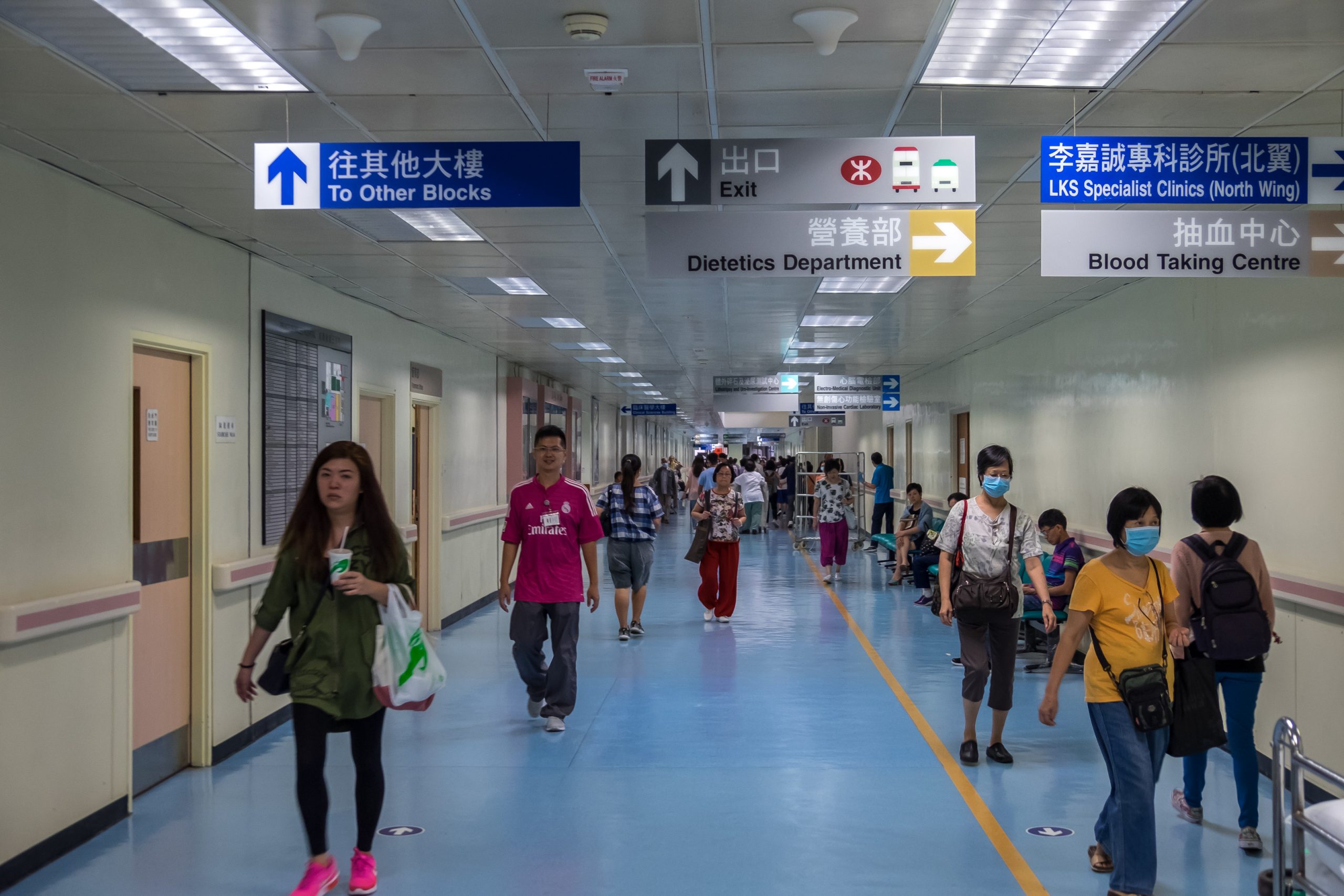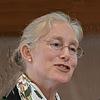East Asia Blog Series
Easing the Burden of Disease on the Poor through Financial Protection
Karen Eggleston 3 Jun 2021
In the People’s Republic of China, reducing the risk of illness-induced poverty entails raising the poor’s financial protection and health system reforms.
Introduction
By achieving near-universal population coverage of social insurance, the People’s Republic of China (PRC) has improved access to and use of health services and reduced the proportion of out-of-pocket (catastrophic) spending. Yet among the country’s poor people, catastrophic health expenses are still high despite the government’s attempt to provide additional financial protection.
The current insurance system should target underprivileged populations to enhance financial protection in the country. Such targeting requires a clear and integrated policy encompassing the basic social health insurance schemes, catastrophic medical insurance, medical aid, and improved healthcare efficiency. To break the vicious cycle of illness-induced poverty and return to poverty because of illness, the protection of poor people from health care costs should be regarded as an important element of poverty alleviation in the PRC. Increased spending on health, however, will not improve financial protection without further measures to increase health system efficiency, strengthen primary care, and reform provider payment systems.
Context
The United Nations Sustainable Development Goals in 2016 committed countries to achieve universal health coverage by 2030 with a focus on essential health services and financial protection. Universal health coverage means that all individuals and communities should get the quality health services they need without incurring financial hardship. It has three dimensions: population coverage, covering all individuals and communities; service coverage, reflecting the comprehensiveness of the services that are covered; and cost coverage, the extent of protection against the direct costs of care.
In 2009, the PRC began implementing comprehensive health system reforms. A major goal of these reforms was to achieve universal health coverage by building a social health insurance system. According to a 2017 monitoring report by the World Health Organization and the World Bank, the PRC had a fairly high score for coverage of essential health services on 16 health indicators but a low score for financial protection to reduce the risk of illness-induced poverty.
This policy brief examines the PRC’s progress in enhancing the financial protection of social health insurance and identifies the main gaps yet to be filled to fully achieve universal health coverage. It is based on a paper by Hai Fang, Karen Eggleston, Kara Hanson, and Ming Wu, published in volume 19 of the journal BMJ.
Policy Solutions
The 2009 health system reforms proposed a universal health insurance system that consisted of three main social health schemes in each locality: Urban Employee Basic Medical Insurance, Urban Resident Basic Medical Insurance, and Rural New Cooperative Medical Scheme, with other supplementary insurance and private insurance. The reforms aimed to cover the entire population with one of the three basic schemes to give them greater financial protection. In 2016 with some heterogeneity by locality, the urban resident and rural schemes merged to form the Urban—Rural Resident Basic Medical Insurance to improve administrative efficiency.
To give added protection to patients with critical illnesses, catastrophic medical insurance (also called critical illness insurance or Da Bing Yi Bao) was initially launched in 2012 and implemented nationally in 2015. It covers patients with critical illnesses whose out-of-pocket expenses are more than the average disposable income per capita in the local area, providing extra reimbursement and removing the benefit ceiling.
The medical aid program (also called medical financial assistance or Yi Liao Jiu Zhu), which was launched in 2003 in rural areas and expanded to urban areas in 2005, provides a further safety net. It was designed to provide medical aid to the poorest people by paying their medical insurance premiums and reducing out-of-pocket expenses after receiving reimbursement from the basic social health insurance schemes and catastrophic medical insurance.
Policy Implementation
The national health reforms of 2009 consolidated a fragmented health insurance system, creating an expanded public health service package that provides basic population health services to all Chinese. Recent mergers of insurance risk pools—such as raising benefit levels of the New Cooperative Medical Scheme to those of the Urban Resident Basic Medical Insurance—and implementation of catastrophic supplementary insurance within local social health insurance systems are encouraging trends for closing gaps in risk protection.
Over the past 2 decades, health spending has grown considerably as the economy experienced unprecedentedly rapid growth. By 2017, the government share of spending represented slightly over 9% of overall government expenditures. The money to invest in the expansion of healthcare came from a mix of central and provincial budgets, with per capita budget allocations that include higher central government subsidies for lower-income provinces. Funding for the medical aid program comes mainly from governments, welfare lotteries, and social donations. Meanwhile, a governance reshuffle consolidated the purchaser role for social health insurance schemes under the newly created National Medical Security Administration, with most other functions assigned to a rechristened National Health Commission.
The PRC also invested a substantial amount of public funds in health services. Government health care budgets financed construction and renovation of government primary care facilities, subsidies to replace provider revenues generated from drug dispensing, purchase of medical equipment for public hospitals, expansion of public health services, and training and continuing medical education.
The increased health spending—directly on healthcare infrastructure and subsidizing social health insurance for the rural and urban non-employee populations—substantially reduces the burden on families. Furthermore, the PRC’s world-leading technological prowess in multiple fields spanning digital commerce to artificial intelligence—and accompanying innovative business models for online consultations that have not yet been fully integrated into the health system—hold promise for supporting higher quality and more convenient health care for the country’s 1.4 billion citizens.
Policy Outcomes
Reforms over the past 2 decades have brought the health care system closer to a level of reliability and accessibility commensurate with the country’s new affluence. The consolidation of the social health insurance system ensured coverage of the entire population for basic health services, contributing to a surge in health care utilization while reducing out-of-pocket costs to patients.
The percentage of people who reported a need for hospital admission but did not receive inpatient care decreased from 29.6% in 2003 to 25.1% in 2008 and 17.1% in 2013. The average number of outpatient visits per capita increased from 1.7 in 2003 to 5.9 in 2017, and the annual inpatient hospital admission rate increased from 3.6% in 2003 to 17.6% in 2017. The use of outpatient services was comparable with the global average, but admission rates were much higher. Furthermore, the government’s investments into the public health system substantially increased the number of health workers and hospital beds and helped keep the prices of health care services low.
The expansion of health insurance coverage reduced the share of out-of-pocket health expenses in total health expenditures from 56% in 2003 to 29% in 2017. It is projected to decrease to 25% by 2030.
Catastrophic medical insurance and medical aid were effective in supplementing the basic social health insurance schemes and provided extra financial protection to a range of vulnerable groups, including people who are poor, chronically ill or disabled, disadvantaged by geographical factors, very young, or frail and old. By 2017, catastrophic medical insurance covered more than a billion people in the PRC and 11 million people received extra benefits of more than ¥30 billion (about $4.3 billion).
The insurance reduced the average proportion of out-of-pocket expenses after reimbursement from basic social health schemes by about 10%. In 2017, through medical aid, 56.2 million people (4% of the population) received subsidies to pay for their social health insurance premiums. For the same year, 35.2 million people (2.5%) received on average ¥757 (around $118.84) or about 12% of average inpatient spending per admission to cover out-of-pocket expenses.
References
Center for Health Statistics and Information, National Health and Family Planning Commission. 2015. An Analysis Report of National Health Services Survey in China, 2013. China Union Medical University Press.
Central Committee of the Communist Party of China and the State Council. 2009. Opinions on Deepening Health System Reform.
Chinese Ministry of Finance and Ministry of Civil Affairs. 2013. Announcement about Management Methods of Urban Rural Medical Aid Funding. 23 December.
H. Fang et. al. 2019. Enhancing Financial Protection under China’s Social Health Insurance to Achieve Universal Health Coverage. BMJ. 365: l2378.
H. Li and J. Jiang. 2017. Catastrophic Medical Insurance in China. Lancet. 390: 1724–5.
Author

Karen Eggleston
Deputy Director, Shorenstein Asia-Pacific Research Center, Stanford University
This blog is reproduced from Development Asia.


